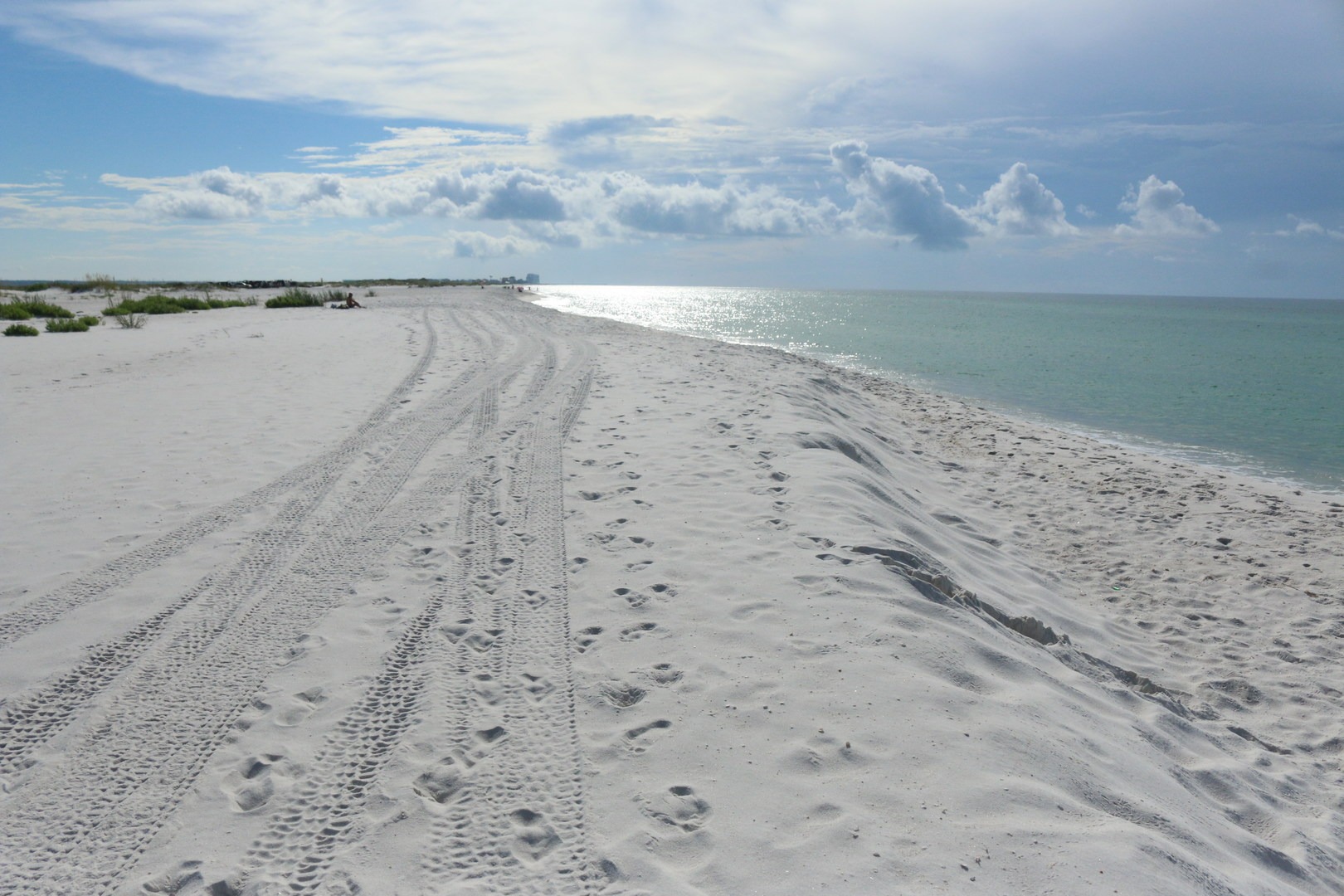You are here
Protecting critical shoreline habitat and barrier islands, the Florida areas of the Gulf Islands National Seashore offer abundant outdoor recreation opportunities throughout more than 135,000 acres of wilderness. White sand quartz beaches, miles of shoreline, and barrier islands beckon hikers, kayakers, and other outdoor enthusiasts with incomparable adventure on undeveloped land on the Gulf of Mexico. Protected lands in the Gulf Islands National Seashore fall into six distinct sites.
Okaloosa Island: Bordering the Choctawhatchee Bay, this area includes beach and dune ecosystems. The waters are often calm, and the beach is popular for swimming and snorkeling amid the nearby seagrasses. Additionally, the site is utilized by kiteboard classes, and their colorful sails contrast with the blues of the sky or the fiery hues of sunset. Restrooms and showers are available. Though there is a boat ramp here, it is often covered with sand or otherwise unusable.
Perdido Key: This area highlights the Gulf of Mexico and white, sugar-sand beaches. Picnic shelters are available, and this is one of the few seashore areas that offers lifeguards during the summer months. For those interested in the natural resources of the ecosystem, the Perdido Key area includes an elevated Discovery Trail.
Fort Barrancas: Located on the Pensacola Air Station, this site requires an ID check of valid drivers' licenses. A visitor center offers a bookstore, restrooms, and information on the history of the area. The three historic forts are open for self-exploration or as part of a ranger tour.
Naval Live Oaks: Part of the mainland, the Naval Live Oaks area is unique among the Florida sites in being dominated by coastal forest. More than 7 miles of hiking trails weave through the woods, highlighting native Florida tree species like the live oaks that give the area its name, saw palmetto, and other varieties. Picnic tables and a covered picnic pavilion are available, and the shore provides swimming and fishing access to the Santa Rosa Sound. A visitor center showcases information on the natural history of the property and descriptions of the use of live oaks in the region for shipbuilding and other sailing activities.
Fort Pickens: Perhaps the most famous of the Florida areas of the Gulf Islands National Seashore, Fort Pickens includes the historic fort, beach access along the Gulf of Mexico and the Santa Rosa Sound, a summer snackbar and lifeguard service, a visitor center with a bookstore and museum, and excellent wildlife viewing opportunities. The shorebird and seabird seeking here is excellent, with terns, gulls, plovers, loons, sandpipers, and more making a long list of possible sightings. The fort itself was built in the 1830s, and both self-guided and ranger-led tours are available.
Santa Rosa: Beaches and rolling sand dunes make up the majority of the Santa Rosa area of the Gulf Islands National Seashore. Least terns and snowy plovers nest here, as do multiple species of sea turtles. Surf and wade fishing are especially popular, and there are multiple access points available on the Gulf of Mexico and the Santa Rosa Sound. Picnic shelters and restrooms are available at some parking areas, but not all.
Logistics + Planning
Current Weather: Powered by Dark Sky






























Comments
Sign In and share them.